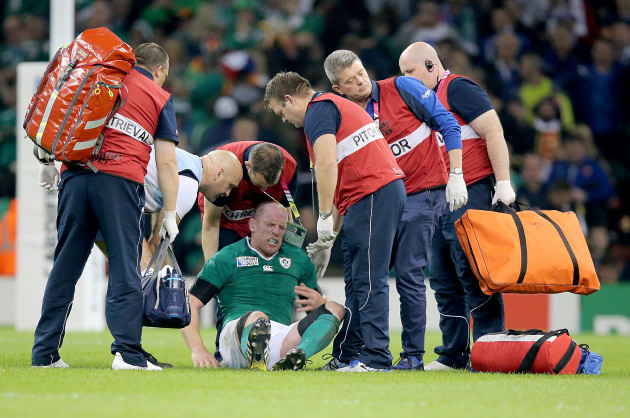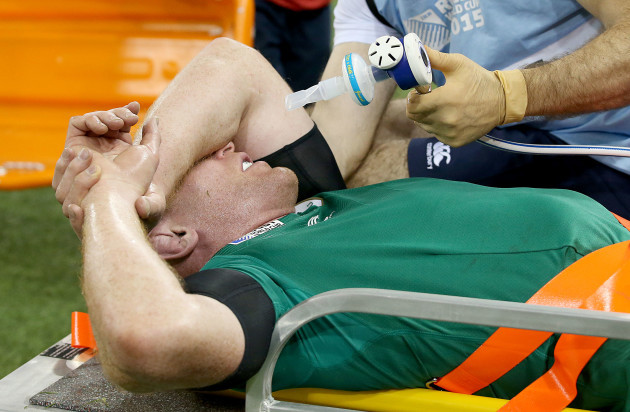Here, with the help of one of the country’s most experienced physiotherapists, Jenny Branigan of Dublin-based totalphysio.ie, we sought a little more information.
We even had to cheek to ask was there any way he could play Sunday against Argentina.
The42: Is a hamstring more likely to tear earlier or later in a game?
Jenny Branigan: Muscle fatigue is one of the (many) risk factors for the more common hamstring injuries we see, so typically they are most likely to occur later in the game.
Paul’s injury was a more significant hamstring injury, where he tore the muscle from its attachment to the pelvis. This is called an avulsion of the hamstring tendon.
His injury appears to be the result of a sharp overstretching of his hamstring while in an extreme position during an awkward tackle.
The42: Is there ANY way he could have played?
Jenny Branigan: Absolutely no way he could have played on.
The hamstring is a large group of 3 major muscles with some contribution from one of the adductor (groin) muscles.
Tearing this muscle complex completely will cause significant pain and loss of function.
The42: How come they take so long to recover from?
Jenny Branigan: Hamstring strains or tears are a frustrating injury because the symptoms are persistent, healing is slow, and the rate of re-injury is very high.
A weak or inflexible hamstring is at increased risk of tearing once the pressure on it is increased.
Many people we see will chance playing a match at the weekend (against advice), which is very risky.
The42: Why are they so painful?
Jenny Branigan: The pain of a hamstring tear depends on how bad the tear is. All muscle strains can be divided into three grades according to their severity:
Grade 1: mild (first degree) strain or contusion. This is a tear of a few muscle fibres with minor swelling and discomfort and with no, or only minimal, loss of strength and restriction of movement.
Grade 2: moderate (second degree) strain or contusion. This results in greater damage of the muscle with a clear loss of strength.
Grade 3: severe (third degree) strain or contusion. This is a tear extending across the whole cross section of the muscle resulting in a total lack of muscle function”
The42: Is ripping the hamstring off the bone more serious than a tear in the ‘middle’ of the muscle?
Jenny Branigan: Much more serious. Tearing the hamstring off the bone is a rarer form of hamstring injury than a normal tear in the belly of the muscle.
Surgical reattachment results in a long recovery period, which is likely to take up to 6 months.

